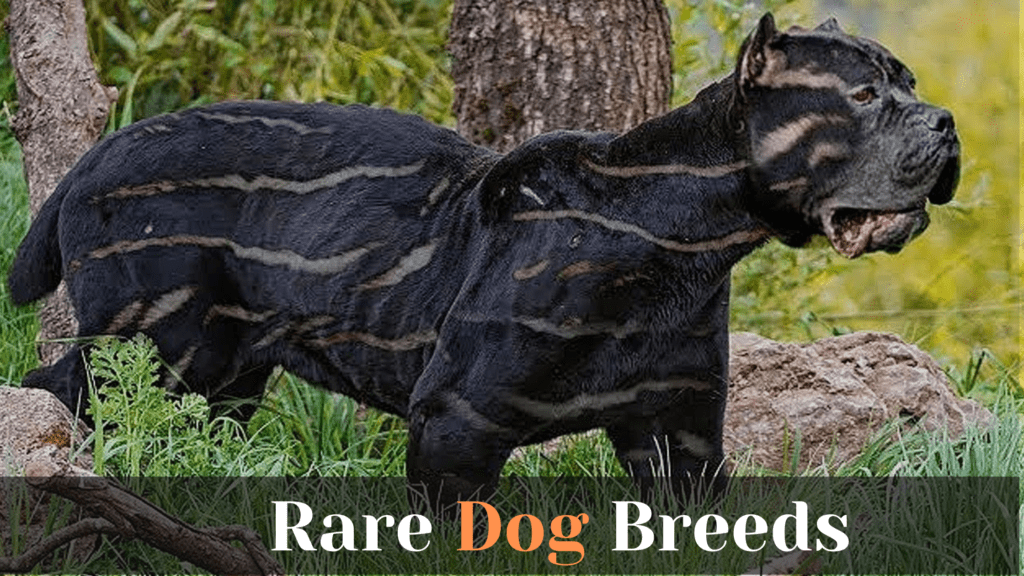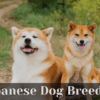There are numerous rare dog breeds that are relatively less common compared to popular breeds.
Here Are a Few Examples Rare Dog Breeds:
Azawakh:
The Azawakh is a rare and elegant sighthound breed originating from West Africa, particularly Mali, Niger, and Burkina Faso. Here are some key features and
characteristics of the Azawakh:
Appearance:
Azawakhs have a slim, lean, and athletic build with long legs. They are famous for their graceful and elegant appearance. They have a short, fine coat that comes in various colors and patterns, including fawn, brindle, black, and blue.
Temperament:
Arawakhs are loyal and protective dogs. They tend to be reserved and aloof with strangers but form strong bonds with their families. They are known for their independent nature and require early socialization and consistent training.
Activity Level:
As sighthounds, Azawakhs have a high energy level and require regular exercise. They enjoy activities that allow them to stretch their legs and run freely in a secure, fenced area. Mental stimulation through training and playtime is also important for their well-being.
Hunting Background:
Azawakhs have a long history of being hunting and guarding dogs in their native region. They were bred to chase and capture fast prey such as gazelles and other small game. Their keen eyesight and impressive speed make them excellent hunters.
Care and Maintenance:
Azawakh’s short coat is relatively low-maintenance and requires occasional brushing to keep it clean and free of mats. They are a relatively healthy breed with no major breed-specific health concerns, but responsible breeders conduct health screenings to ensure the well-being of their puppies.
Norwegian Lundehund:
The Norwegian Lundehund, also known as the Norwegian Puffin Dog, is a unique and rare breed that originated in Norway. Here are some interesting facts about the Norwegian Lundehund:
Origin:
The Lundehund has a long history that dates back several centuries. It was initially bred for hunting puffins and other seabirds in the rugged coastal cliffs of Norway. The breed’s unique physical attributes allowed it to navigate narrow crevices and climb steep cliffs in pursuit of its prey.
Six Toes:
One of the most distinctive features of the Lundehund is its six toes on each foot. This extra digit, known as polydactylies, provides them with enhanced agility and grip when climbing rocky surfaces. Additionally, their feet have unique flexible joints, enabling them to spread their toes apart, making them excellent climbers.
Flexible Body:
Lundehunds have an incredibly flexible bodies due to their highly mobile joints. They can bend their head backward to touch their spine, bend their forelegs outwards to a 90-degree angle, and even rotate their shoulders to allow their front paws to extend flat to the side. This flexibility aids them in navigating tight spaces and twisting pathways.
Double-Jointed:
The Lundehund has a double-jointed neck, allowing it to tilt its head backward until it touches its back. This feature helps protect the breed’s eyes when maneuvering through narrow passages or when confronted by aggressive birds protecting their nests.
Friendly and Energetic:
Lundehunds are known for their friendly and affectionate nature. However, they can be somewhat reserved with strangers. These dogs are highly energetic and require regular exercise to keep them physically and mentally stimulated.
Rare Breed:
The Norwegian Lundehund is considered a rare breed outside of Norway. Its population faced a significant decline during World War II, and efforts were made to save the breed from extinction. Today, there are still relatively few Lundehunds worldwide, and finding a breeder or rescue organization specializing in this breed may require some research.
Xoloitzcuintli:
The Xoloitzcuintli, often referred to as Xolo or Mexican Hairless Dog, is an ancient and rare breed native to Mexico. Here are some key features and facts about the Xoloitzcuintli:
Appearance:
Xolos come in three sizes: toy, miniature, and standard. They can be hairless or coated. The hairless variety lacks fur except for some tufts on the head, tail, and feet, while the coated variety has a short, sleek coat. They have a unique appearance with a lean, muscular body and a distinctive wedge-shaped head.
History and Cultural Significance:
The Xoloitzcuintli has a rich history dating back over 3,000 years. It is believed to have been a sacred dog in Aztec and Mayan civilizations, often associated with healing and believed to have mystical and protective qualities. Xolos were also valued as companions and kept as household pets.
Temperament:
Xolos are known for their loyalty and affection towards their families. They can be reserved with strangers but are generally friendly and gentle. They are intelligent and trainable but may display a stubborn streak at times. Early socialization and positive reinforcement-based training are essential for their well-rounded development.
Health and Care:
Xolos are generally healthy dogs, and the hairless variety requires special care to protect their sensitive skin from the sun, cold, and other elements. Regular skin care, including moisturizing and sun protection, is necessary. Coated Xolos have lower maintenance needs but still benefit from regular grooming. Overall, they are a relatively low-shedding breed.
Activity Level:
Xolos are active dogs that require regular exercise to keep them physically and mentally stimulated. Daily walks, playtime, and interactive activities are important for their well-being. However, their energy levels can vary based on individual temperament and size.
Popularity and Rarity:
Xolos are still considered a rare breed outside of Mexico, although their popularity has been gradually increasing. They have a dedicated following of enthusiasts who appreciate their unique heritage and distinct appearance.
Otterhound:
The Otterhound is a rare and unique breed that originated in England. Here are some key features and facts about the Otterhound:
Appearance:
The Otterhound is a large, rugged breed with a shaggy and dense double coat. They have a distinctive “otter-like” face with long eyebrows, droopy ears, and a prominent nose. Their size and build give them a strong and athletic appearance.
Hunting Background:
The Otterhound is a large, rugged breed with a shaggy and dense double coat. They have a distinctive “otter-like” face with long eyebrows, droopy ears, and a prominent nose. Their size and build give them a strong and athletic appearance.
Temperament:
Otterhounds are known for their friendly and outgoing nature. They tend to be sociable and get along well with other dogs and people, making them good family companions. They are generally good-natured and patient, but they may have an independent streak that requires patience and consistent training.
Activity Level:
Otterhounds are an active and energetic breed that enjoys physical exercise and mental stimulation. They require regular exercise, such as daily walks or opportunities for free running in a secure area. Their hunting background also means they have a strong prey drive, so they should be kept in a secure environment.
Coat Care:
The Otterhound’s shaggy double coat requires regular maintenance. Brushing is necessary to prevent matting, and occasional hand-stripping may be required to maintain the texture of the coat. Their coat also provides protection from the elements and water-resistant properties.
Health:
Otterhounds are generally a healthy breed, but like many large breeds, they can be prone to certain health issues. These can include hip dysplasia, bloat (gastric dilation volvulus), and some genetic conditions. Responsible breeders conduct health screenings to help ensure the overall health of their breeding stock.
Rarity:
The Otterhound is considered a rare breed globally. Their numbers are relatively small, and they are not as commonly seen or readily available as some other breeds. However, efforts are being made to preserve and promote the breed.
Catalburun:
The Catalburun, also known as the Turkish Pointer or Turkish Hound, is a rare and distinctive breed of dog originating from Turkey. Here are some key features and facts about the Catalburun:
Appearance:
The Catalburun is primarily known for its unique split or double-nose. This feature sets it apart from other dog breeds. The nose is divided into two distinct halves, each with its own nostrils. The breed has a medium-sized body with a muscular build, and the coat is usually short and dense.
Hunting Background:
Catalburuns were originally bred for hunting purposes in Turkey, specifically for scenting and tracking game such as birds and small mammals. They have a strong sense of smell and are known for their excellent hunting skills.
Temperament:
Catalburuns are known to be intelligent, independent, and highly energetic dogs. They are typically loyal and devoted to their families but can be reserved or aloof with strangers. Early socialization and consistent, positive training methods are important for their well-rounded development.
Activity Level:
Catalburuns have a high energy level and require regular exercise and mental stimulation. They thrive in active environments where they can engage in physical activities, such as long walks, jogging, or playing games that challenge their intellect.
Health and Care:
As a relatively rare breed, the Catalburun does not have any major breed-specific health concerns. However, responsible breeders conduct health screenings to ensure the well-being of their breeding stock. Regular veterinary check-ups, a balanced diet, and proper exercise are essential for their overall health and well-being.
Rarity:
The Catalburun is considered a rare breed even within its native country of Turkey. It is highly valued for its unique appearance and hunting abilities. Outside of Turkey, finding a Catalburun may be challenging, and individuals interested in this breed may need to conduct thorough research and potentially seek assistance from specialized breed clubs or organizations.
Conclusion:
In conclusion, rare dog breeds offer a unique and fascinating opportunity for dog enthusiasts. These breeds often have special characteristics, histories, and traits that set them apart from more common breeds. Owning a rare dog breed allows you to have a distinctive companion and contribute to the preservation and promotion of these unique breeds.
While finding rare dog breeds may require some extra effort, reaching out to specialized breed clubs or organizations can provide valuable information on reputable breeders, rescue options, and events where you can meet these rare dogs. It’s important to conduct thorough research, assess the breed’s suitability for your lifestyle and family, and consider any breed-specific health concerns or training needs.
FAQs:
What makes a dog breed rare?
Rare dog breeds are characterized by their limited population, lesser-known status, and relative scarcity compared to more popular or mainstream breeds. Factors such as geographical location, historical significance, or specialized traits contribute to a breed’s rarity.
Why should I consider getting a rare dog breed?
Choosing a rare dog breed can be an opportunity to own a unique and distinct companion. Rare breeds often have fascinating histories and special traits that set them apart. Additionally, by adopting or supporting a rare breed, you can contribute to its preservation and prevent its decline.
Where can I find rare dog breeds?
Finding rare dog breeds can be a bit challenging, but there are a few avenues you can explore. Contacting specialized breed clubs or organizations dedicated to the breed of interest is a good starting point. They can provide information on reputable breeders, rescue organizations, or events where you can meet these rare dogs.
Is rare dog breeds harder to train?
Trainability varies from breed to breed, regardless of their rarity. While some rare breeds may have independent or stubborn tendencies, others can be highly trainable and eager to please. Each dog is an individual, so it’s important to assess their temperament, intelligence, and willingness to learn on a case-by-case basis.
Do rare dog breeds have specific health concerns?
In some cases, rare dog breeds may be more prone to certain health conditions due to their genetic makeup or limited gene pool. However, responsible breeders typically conduct health screenings and tests to minimize the risk of passing on genetic issues. Consulting with breed experts or veterinarians can provide more insights into any potential breed-specific health concerns.



